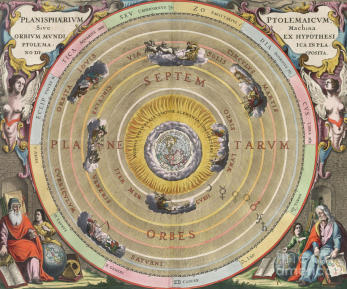From the very beginning of human history, the universe was thought to surround the
Earth, with our planet at the center of all things. Go out on a dark, clear night and you
see what looks like the upper half of a celestial sphere sprinkled with stars arching over
your head. The impression is very strong. That is why the dome of a planetarium can
look so very much like the real night sky.
This geocentric system was taught and refined by the ancient Greeks, among them, Aristotle. The great
influence of Aristotle assured that the Earth-centered view would persist for centuries after his death. What
any system of the universe needed to explain was the occasional backwards motion of the planets called
retrograde motion. As planets seem to wander through the constellations, they seem to back up every year or
so. Mars retrogrades about every 26 months. The geocentric system used a small circle called an epicycle to
explain retrograde motion.
Ptolemy explained the theory of epicycles in his great work on Astronomy, Almagest.
Here is a modern depiction of what the geocentric system would have looked like.
Ptolemy’s work stood for hundreds of years before a new idea was presented in a revolutionary book by Nicolaus Copernicus.





















